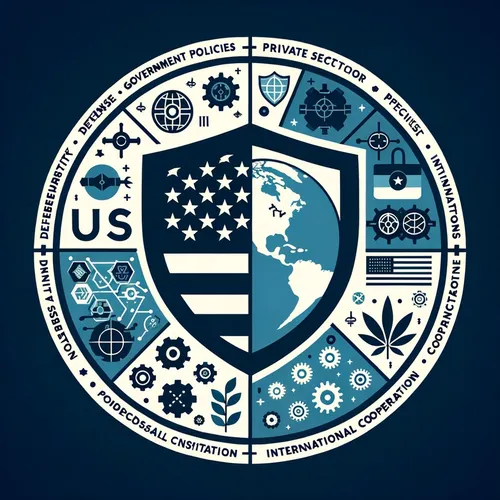Salt Typhoon Strikes Again: China Hacks US Telecoms & Breaches Every Americans Data
- Author
- Quiet. Please
- Published
- Mon 01 Sep 2025
- Episode Link
- https://www.spreaker.com/episode/salt-typhoon-strikes-again-china-hacks-us-telecoms-breaches-every-americans-data--67583947
This is your US-China CyberPulse: Defense Updates podcast.
Hey listeners, it’s Ting—your favorite cyber aficionado who can explain everything from red packets to rootkits! Let’s dive right in—these last few days have been an absolute roller coaster in US-China cybersecurity. No dramatic intro needed—the headlines alone have been living inside my firewall.
So, here’s the big scoop: Salt Typhoon, the notorious Chinese hacking outfit backed by Beijing’s Ministry of State Security, has pulled off data breaches that would make even Hollywood hackers blush. According to the NSA’s joint report with nine international agencies, Salt Typhoon has been targeting US Army National Guard networks, telecom infrastructure, government entities—you name it. Most chilling, experts like FBI Assistant Director Brett Leatherman warned these “ongoing” breaches have compromised personal data on nearly every American, with AT&T, T-Mobile, and Verizon caught in the crossfire. Talk about losing bars for all the wrong reasons.
Tech firms in Sichuan and Beijing have been fingered as suppliers of the hacking arsenal—forensic wizards at Kaspersky Lab found the Demodex malware was used to remotely hijack servers and scrub their tracks, making this campaign unlike your typical snoop job. Real-time surveillance, court-approved comms interception, and a suspicion that even presidential candidates’ devices may have been wiretapped. If you ever get a weird lag on your calls, maybe check for more than just bad reception.
Now, what’s Uncle Sam doing about it? First, the FBI dropped a $10 million bounty for Salt Typhoon operatives and doubled down on public security advisories. Federal guidance pushed major telecoms to harden routers, roll out multi-factor authentication, and monitor suspicious network behavior. Problem is, this breach is still “ongoing” as of August. So, the feds teamed up with agencies from Canada, the UK, Japan, and several European partners for intelligence sharing—an unprecedented move in cyber defense theater.
On the policy front, the second Trump administration disbanded the Cyber Safety Review Board, a move widely criticized for letting key lessons slip through the cracks. Meanwhile, AI regulation grabbed headlines too—Michael Kratsios from the White House Office of Science and Technology Policy is preaching US-led “AI technology stack” standards, urging renewal of the Cybersecurity Information Sharing Act and calling for Asia-Pacific allies to align with US data privacy norms. Given China is tripling AI chip production, the pressure is on to safeguard intellectual property, ensure fair-use for model training, and push foundational measurement science before letting the robots run wild.
Private sector voices, like the Information Technology Industry Council, called for end-to-end encryption across all critical infrastructure—echoed by experts like Jake Williams on X—hoping that tighter tech controls can muzzle future Salt Typhoon rampages. The fallout isn’t just in telecoms; academia’s feeling it too. As per the National Counterintelligence and Security Center, universities are under siege, with China recruiting students and siphoning off breakthroughs from quantum tech to hypersonics. No sector is safe if you’re using Wi-Fi.
International summits haven’t exactly solved it, though there’s growing interest in dialogue around crisis management, energy security, and even responsible arms-control for emerging tech. But, as seen at the Tianjin SCO summit, the world’s splitting into rival tech blocs faster than you can say “zero day.”
That’s it for this week’s CyberPulse. Thanks for tuning in, listeners! Stay fun, stay safe—and, hey, subscribe for your next hack-free update. This has been a quiet please production, for more check out quiet please dot ai.
For more http://www.quietplease.ai
